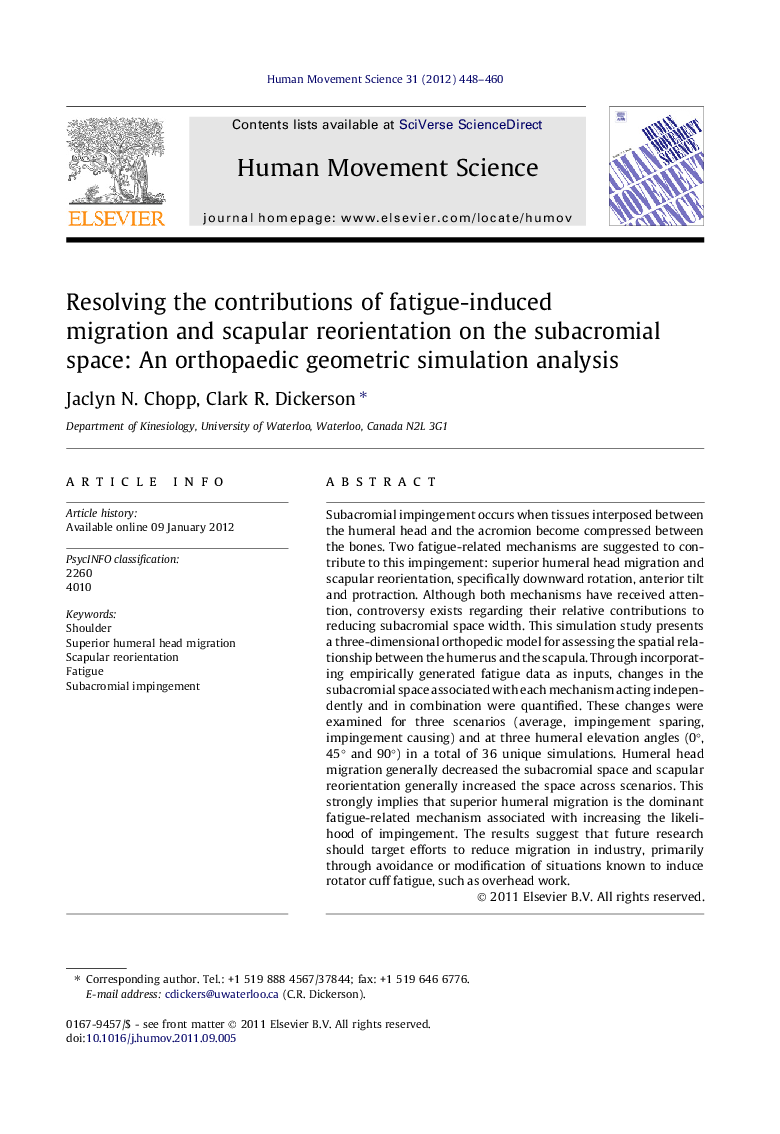| Article ID | Journal | Published Year | Pages | File Type |
|---|---|---|---|---|
| 928543 | Human Movement Science | 2012 | 13 Pages |
Subacromial impingement occurs when tissues interposed between the humeral head and the acromion become compressed between the bones. Two fatigue-related mechanisms are suggested to contribute to this impingement: superior humeral head migration and scapular reorientation, specifically downward rotation, anterior tilt and protraction. Although both mechanisms have received attention, controversy exists regarding their relative contributions to reducing subacromial space width. This simulation study presents a three-dimensional orthopedic model for assessing the spatial relationship between the humerus and the scapula. Through incorporating empirically generated fatigue data as inputs, changes in the subacromial space associated with each mechanism acting independently and in combination were quantified. These changes were examined for three scenarios (average, impingement sparing, impingement causing) and at three humeral elevation angles (0°, 45° and 90°) in a total of 36 unique simulations. Humeral head migration generally decreased the subacromial space and scapular reorientation generally increased the space across scenarios. This strongly implies that superior humeral migration is the dominant fatigue-related mechanism associated with increasing the likelihood of impingement. The results suggest that future research should target efforts to reduce migration in industry, primarily through avoidance or modification of situations known to induce rotator cuff fatigue, such as overhead work.
